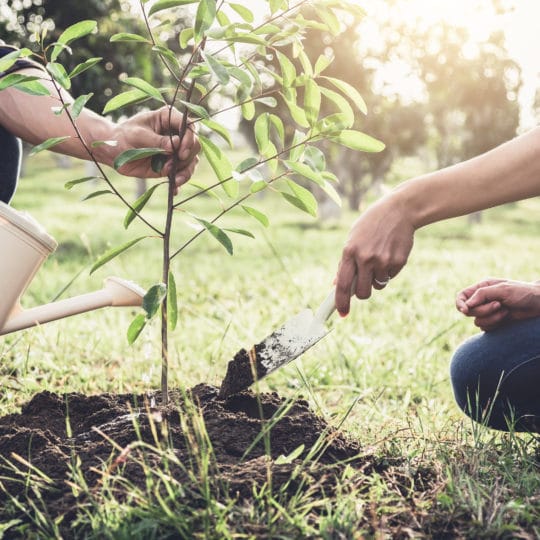A Plan for Planting New Trees
What to Know Before it Grows
Posted
March 26, 2020

As spring brings trees back in bloom and you thank them for the shade in those hot summer days, you may start to think about planting more. It takes more than simply digging a hole and dropping some seeds to make this plant prosper. You need a plan for planting new trees.
Planting New Trees: Where to Begin
A tree is a lifelong commitment. Depending on which type you plant, it will grow taller and spread its canopy across a wide area of your yard. You want to make sure you plan for just how big it’s going to get. When planning to plant a tree, think about:
- Environment. What’s the climate like? Certain trees do better in different environments. Pick the one that will thrive in yours.
- Location. When it gets as big as research says it will be, will the mature tree be too close to your house, street, or power lines (above and below ground)? Any of these locations could mean future damage and more tree maintenance.
- Maintenance. All trees need maintenance at some point. From pruning to harvesting any fruit it bears, be mindful of the level of work this tree brings with it. Be ready to take care of it when the time comes or have to deal with damage and/or disease.
When to Plant a New Tree
Just as the dormant season is best for major pruning, it’s also best for planting. Between the time the leaves have fallen and new buds break, this is the best time to add a tree to the family. There are some exceptions:
- Plant burlapped or container trees anytime throughout the growing season. Take extra care of these plants and don’t be surprised if they show signs of transplant shock—such as slow growth.
- Any time is also a good time if you’re in a tropical and subtropical climate where trees grow year round, as long as there is enough water available.
How to Plant a Tree
After you’ve picked the perfect utility-line free area to plant your tree, it’s time to get digging:
- Dig a shallow, broad hole about two to three times wider than the root ball, but only as deep as the ball. If it’s too deep, there’s less oxygen to help roots develop.
- Remove the root from its container and inspect it for any circling roots. Straighten or remove them.
- Straighten the tree in the hole. You may even want a spotter to help you adjust.
- Gently backfill the hole. Stabilize the root ball by firmly packing soil around the base then the remainder of the hole making sure not to leave any air pockets that could dry out the roots.
- Water periodically while backfilling.
- If necessary, stake the tree for more stability.
- Add mulch around the base of the tree.
Your new tree needs extra care while it’s getting established. Avoid using fertilizer right after planting, but water it at least once a week or more in hot weather. The soil should be moist, but not drenched.
For more tips on planting a new tree and easy ways to maintain its health, contact Cardinal Lawns.

Download Your FREE Summer Plant Care Guide
Help your plants make it through a hot & dry summer looking like a million bucks with our summer plant watering and maintenance guide!